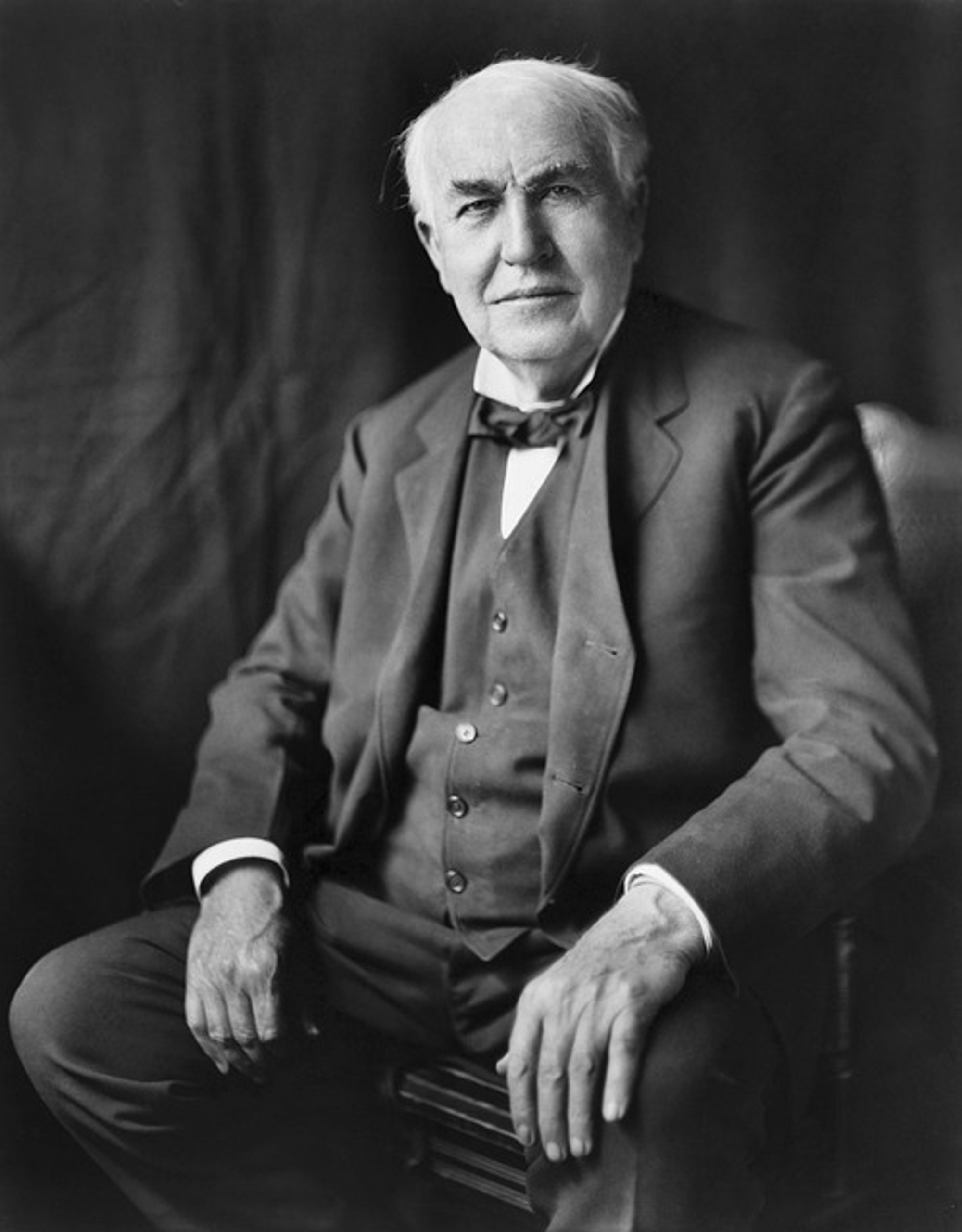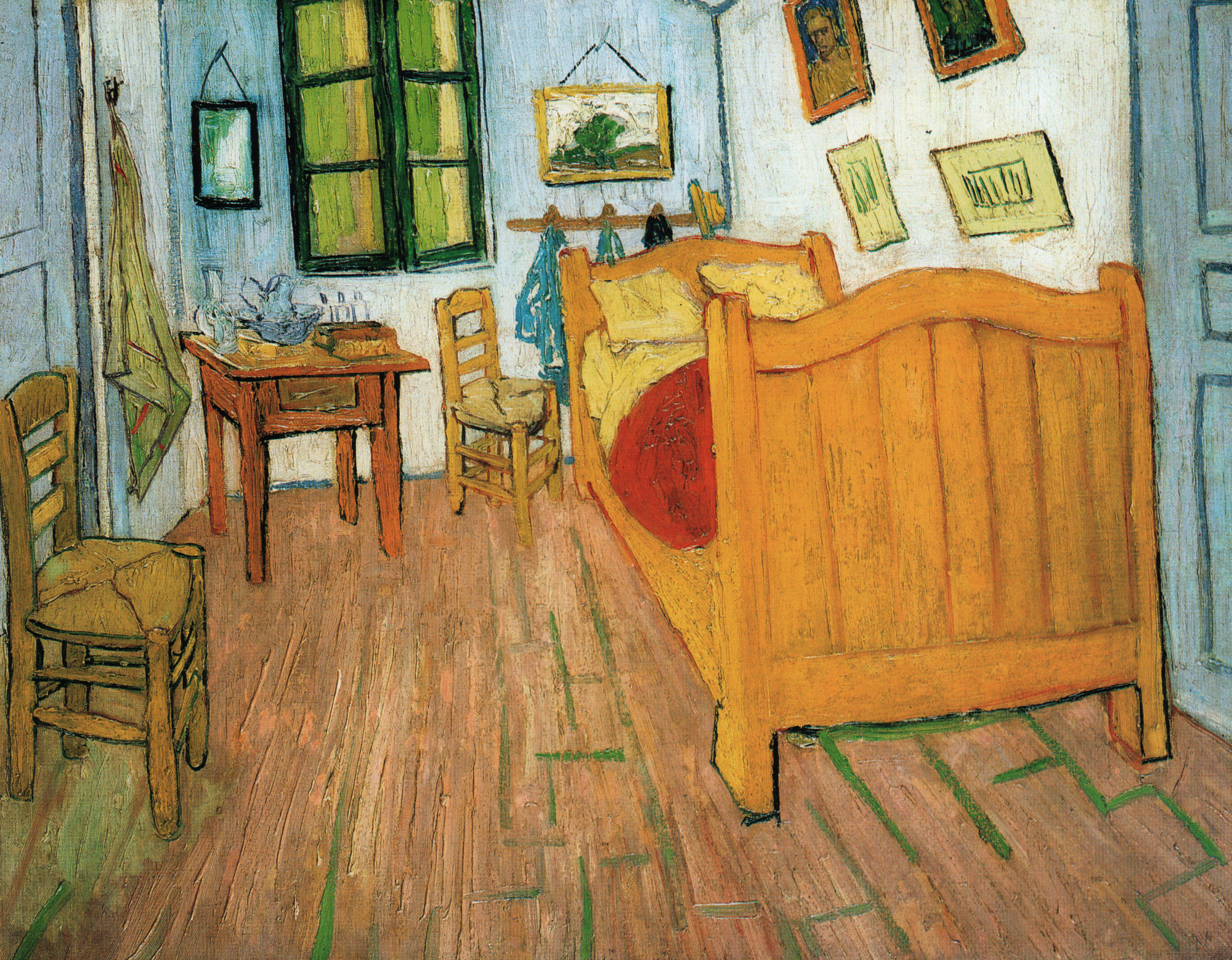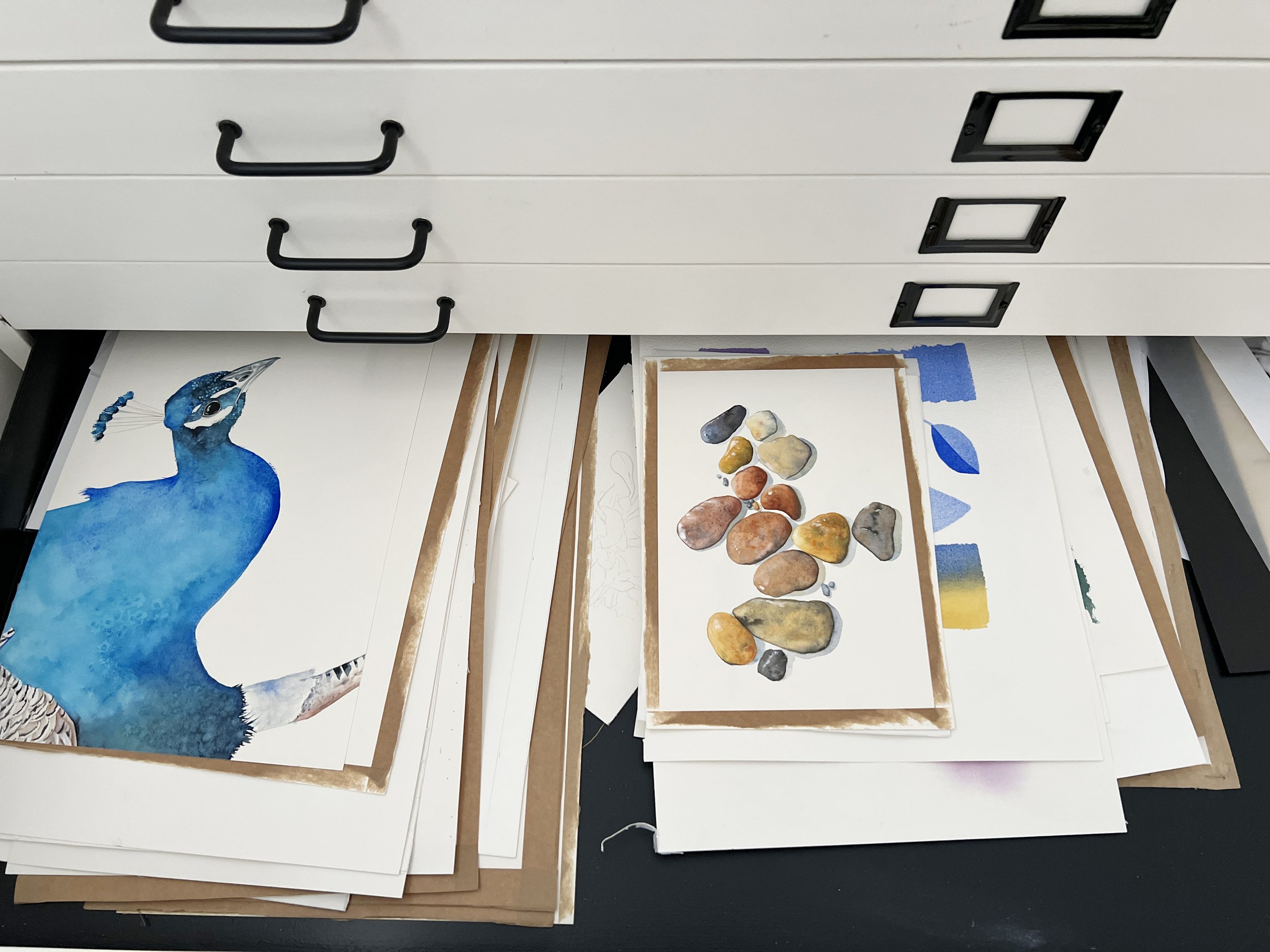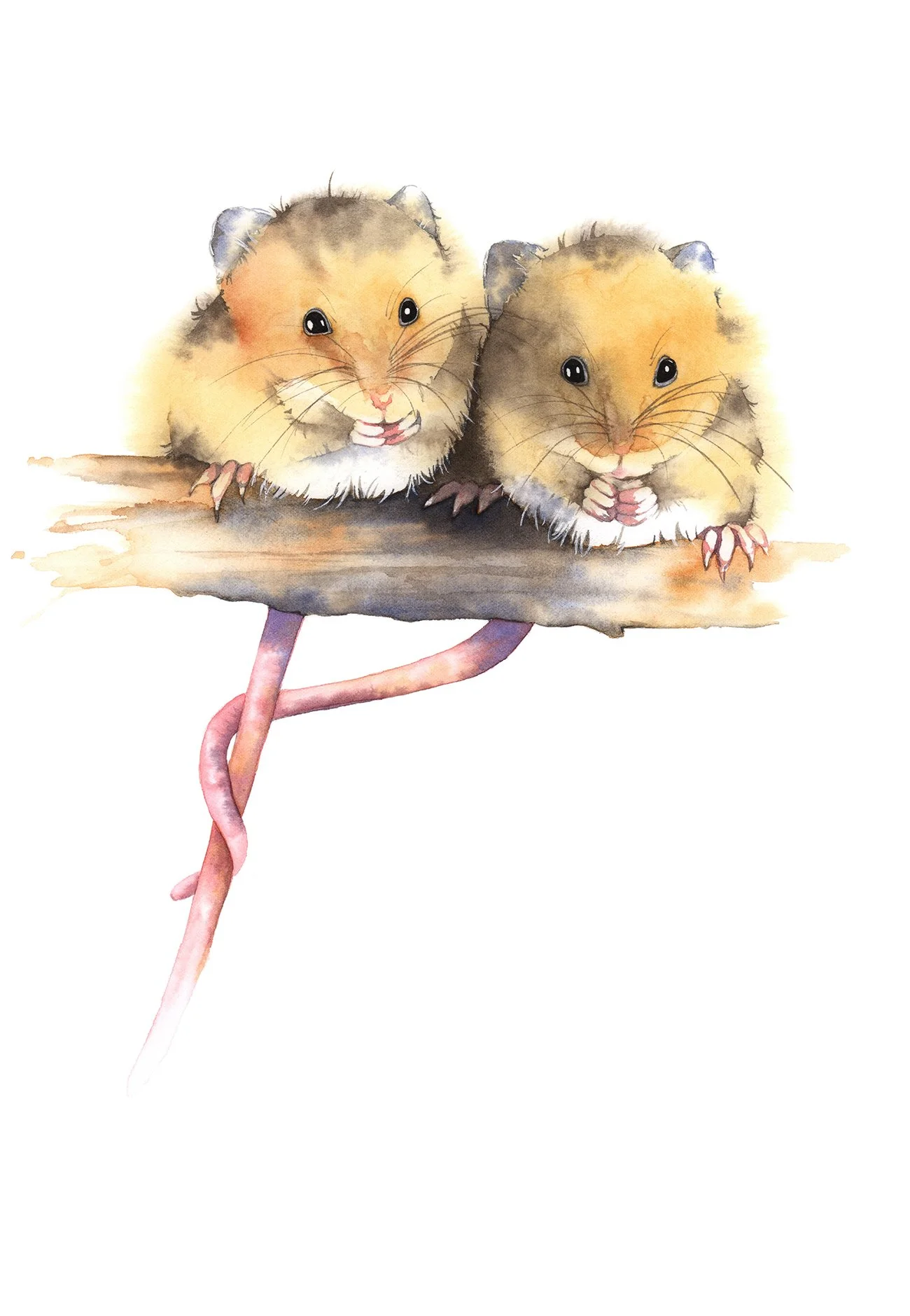Artist Progress: Embracing Growth and Perseverance in Watercolour Painting
Today I want to share a little heart-to-heart as we artists embark on another week filled with the potential for creativity and discovery. I want to talk about something very close to my heart: the journey of growth in our artistic endeavours, especially through the whimsical and sometimes unpredictable medium of watercolour.
From Acrylics to Watercolours: A Leap of Faith
Once upon a time, in a studio not so far away, I found myself at a crossroads. After a decade of painting with acrylics, I felt a stirring for change. The once joy-filled strokes began to feel routine, and my heart yearned for something different. That's the moment when I turned to watercolour, a medium that promised freedom and, little did I know, a fair share of challenges.
Sharing some of my earliest watercolour paintings here. My skill levels were low but I was keen to make progress.
Transitioning from acrylics to watercolours wasn't just about changing paints; it was like learning to dance without knowing the steps. The fluidity and transparency of watercolours were both daunting and mesmerising. At first, it felt like being a beginner all over again, struggling to find my footing in this new, delicate dance.
The Early Days: Embracing the Struggle
This is my first watercolour flower painting. I had no idea what I was doing but I was determined to make progress.
I'll be honest, those early days were filled with frustration. Watercolour, with its own set of rules and techniques, was a tough teacher and progress was slow. The lessons of light to dark, the permanence of each stroke, and the acceptance of "happy accidents" were hard-learned. I found myself creating pieces that, well, let's just say they wouldn't have made it to the fridge door.
But here's the thing: the struggle was part of the journey. Each "failure" was a lesson in disguise, teaching me patience, technique, and, most importantly, perseverance. I kept at it, filling pad after pad with sketches, images and paintings of birds, animals, and anything that caught my fancy.
The Turning Point: Brush Mileage Makes the Master
It wasn't an overnight transformation, but rather a gradual shift. I began to notice progress with my work around mid-2015, after dedicating myself full-time to painting. The secret? Brush mileage. The more I painted, the more comfortable I became with my new dance partner, watercolour. My confidence and passion grew, and so did my skill.
I noticed my work began to improve when I started painting every day.
We were living in Sydney at the time in a small apartment. I didn't know anyone there, so when Dom went off to work I spent the entire day painting.
The brush mileage started to pay off. I could see a difference in the quality of my work.
In 2015, 4 years after I first started painting in watercolour, I felt confident enough to frame one of my paintings and enter it in the Royal Easter Show art competition.
I framed my first watercolour painting.
I entered it in the Royal Easter Show. I didn't win a prize but lots of people showed interest in my painting. They were snapping photos of it with their phones.
Now, looking back at those early works, I can see just how far I've come. It's a reminder that growth and progress in art takes time, patience, and a whole lot of practice. And guess what? The art journey is far from over.
Looking Ahead: New Horizons
Today, I find myself eager to explore new territories in my art. Portraits and figures are calling my name, both a new challenge, a new opportunity for growth. Yes, there will be frustrations and challenges, but the excitement of learning and exploring new aspects of watercolour keeps me going.
Progress with painting skin - this is one of my sons when he was a boy.
A portrait of my little grandson on Aquabord.
Perseverance: The Art of Character Building
Perseverance does more than just improve our painting skills; it moulds our character, strengthens our resolve, and teaches us artists invaluable lessons about navigating life's inevitable ups and downs. This relentless pursuit fosters a mindset of lifelong learning, empowering and encouraging us to face new challenges with a blend of confidence and curiosity.
Making progress with the folds and creases in this denim jacket.
In the studio, each brushstroke is a lesson, each mixed colour a discovery, and every "mistake" a chance to learn. This process of continuous improvement and adaptation isn't just about mastering watercolour; it's about growing as individuals. Embracing our setbacks as opportunities for learning transforms our challenges into stepping stones toward greater achievements. I don't like the saying "practice makes perfect" - but practice certainly helps to develop skills.
As we follow this artistic journey, we realise that the essence of progress lies not in the perfection of each piece we create, but in the depth of our understanding and the breadth of our creativity. With every session, our hands grow more confident, our eyes more discerning, and our hearts more connected to the expressions we create. This kind of progress - measured by the personal milestones we surpass - imbues our work with authenticity and passion.
Lessons from the Greats: Edison, Van Gogh, and Jobs
Thomas Edison, 1920. Public domain via Wikimedia Commons.
The stories of Thomas Edison is one of relentless experimentation. Throughout his exhaustive process, Edison faced numerous setbacks and failures. However, he famously reframed these not as failures but as steps towards success. He is often quoted as saying, "I have not failed. I've just found 10,000 ways that won't work." This mindset highlights his unwavering perseverance and his belief that each "failure" was simply another step closer to finding a solution.
Van Gogh's Bedroom (1888)
Van Gogh’s battle is one of someone who struggled with mental health issues and poverty for much of his life. He didn't start painting until his late twenties, and his career as an artist lasted only a decade.
Apple computer with screen, keyboard and mouse.
Steve Jobs' path from obscurity to creating a technological revolution reminds us of the transformative power of perseverance. These icons of innovation and creativity didn't achieve greatness despite their failures; they achieved it because of their unwavering commitment to their visions and their ability to learn from each setback.
Their journeys underscore the importance of staying true to our aspirations, embracing each failure as a stepping stone, and continually pushing ourselves to evolve. In watercolour and in life, the spirit of perseverance is what turns dreams into realities.
Your Journey: Embrace It, Every Step of the Way
To all my fellow artists, whether you're just starting out or well on your journey, remember this: embrace every step, every stumble, and every success. Your early works are not failures; they're stepping stones that help you progress. Keep them, cherish them, and let them remind you of how far you've come and how much further you can go.
My paper cupboard has a drawer filled with paintings that failed. I keep them to remind myself how far I have come.
Making progress on a Blue Faced Honey Eater painting.
The journey of growth in watercolour is a beautiful one, filled with its own ups and downs. But with patience, practice, and perseverance, your progress will be a sight to behold. So, grab your brush, dip it in water, and let's continue this wonderful journey together. Remember, the most valuable and beautiful parts of our journey are often found not in the destination but in the steps we take to get there.
Have a wonderful week, and never forget: the best is yet to come!
With love, patience and splash of watercolour,
Louise
If you are interested in learning to paint in watercolour, I have over 170 online, voiced over watercolour tutorials for all skill levels.
Original art, prints and merchandise are available to purchase in the shop.



















